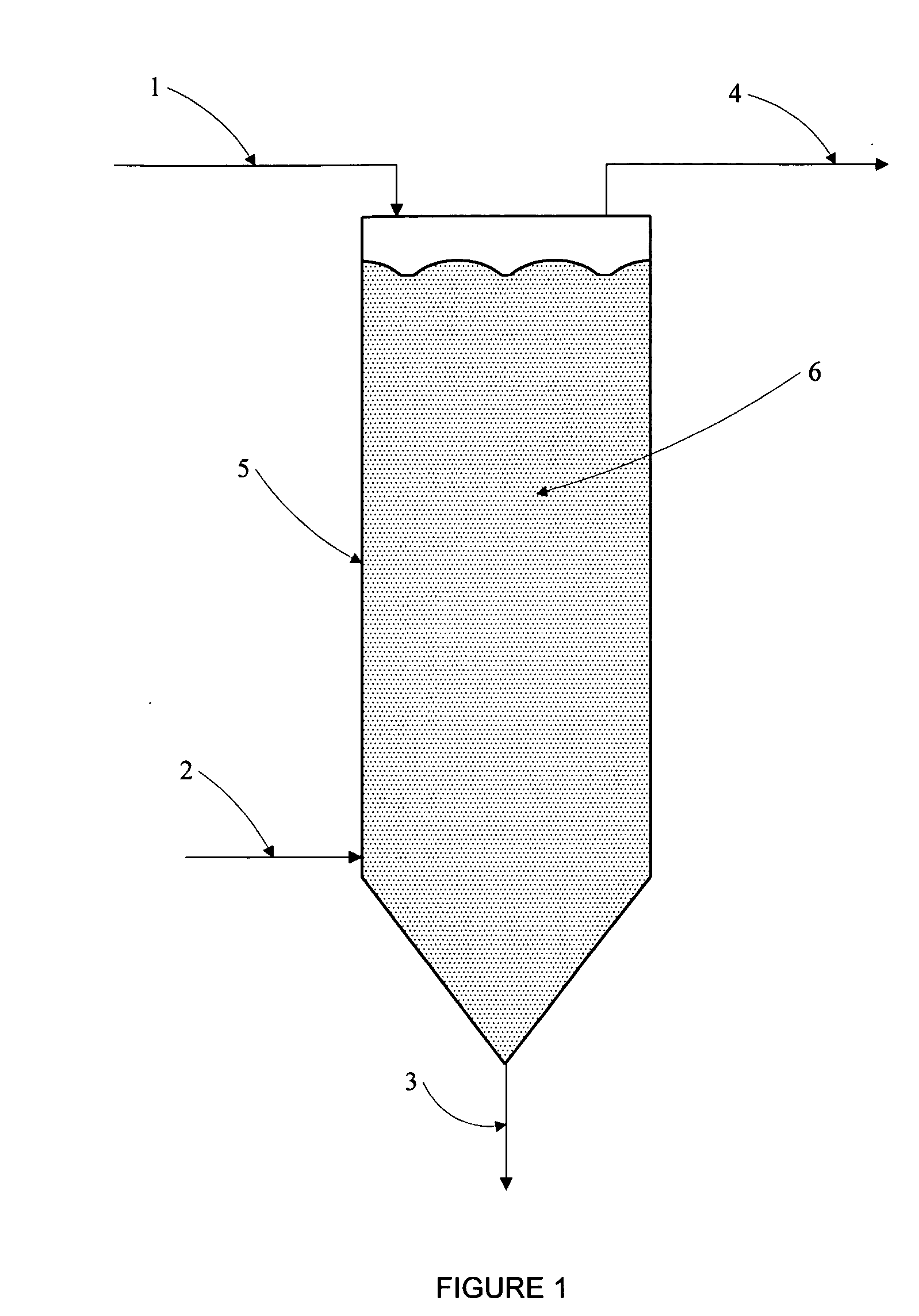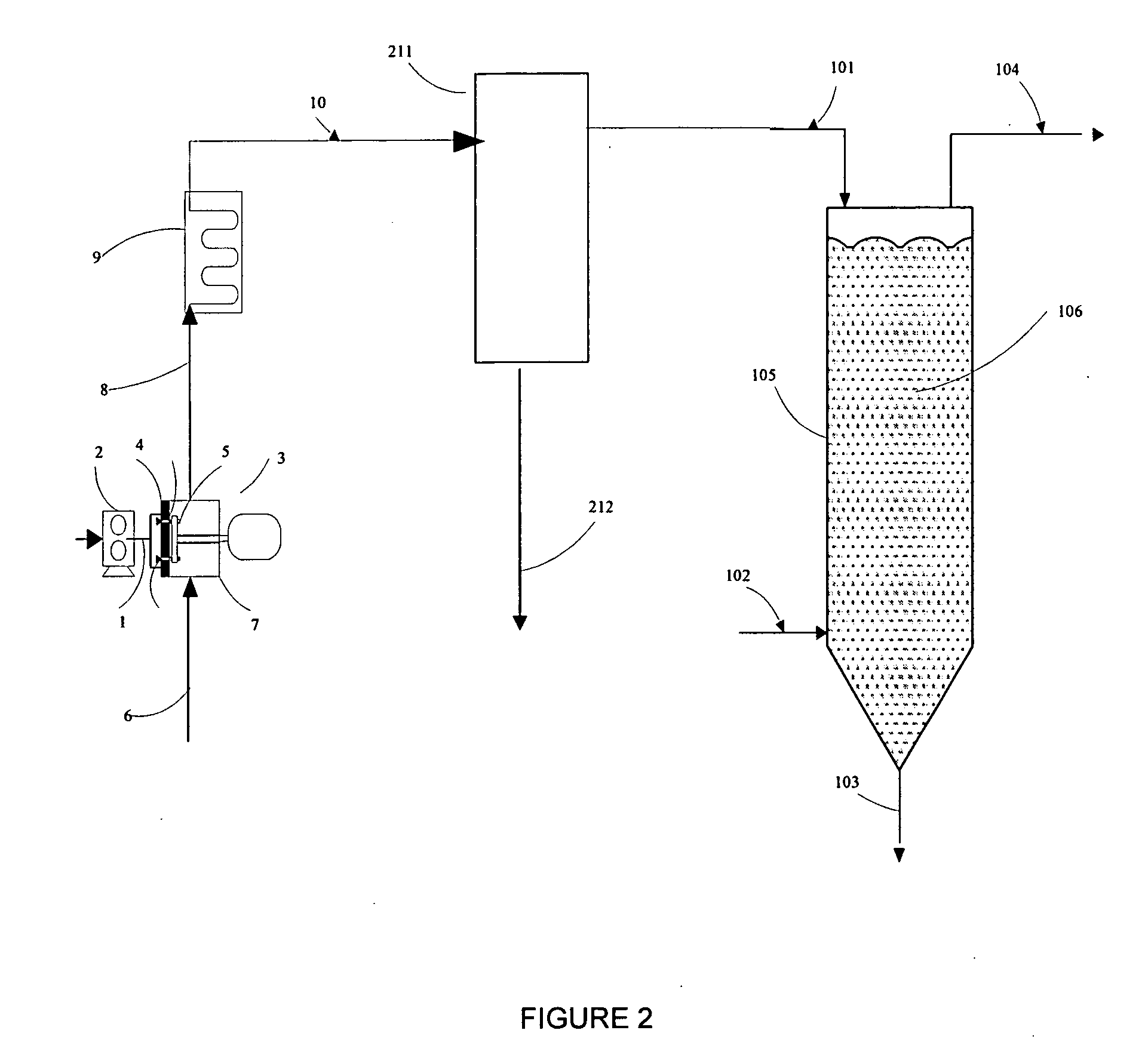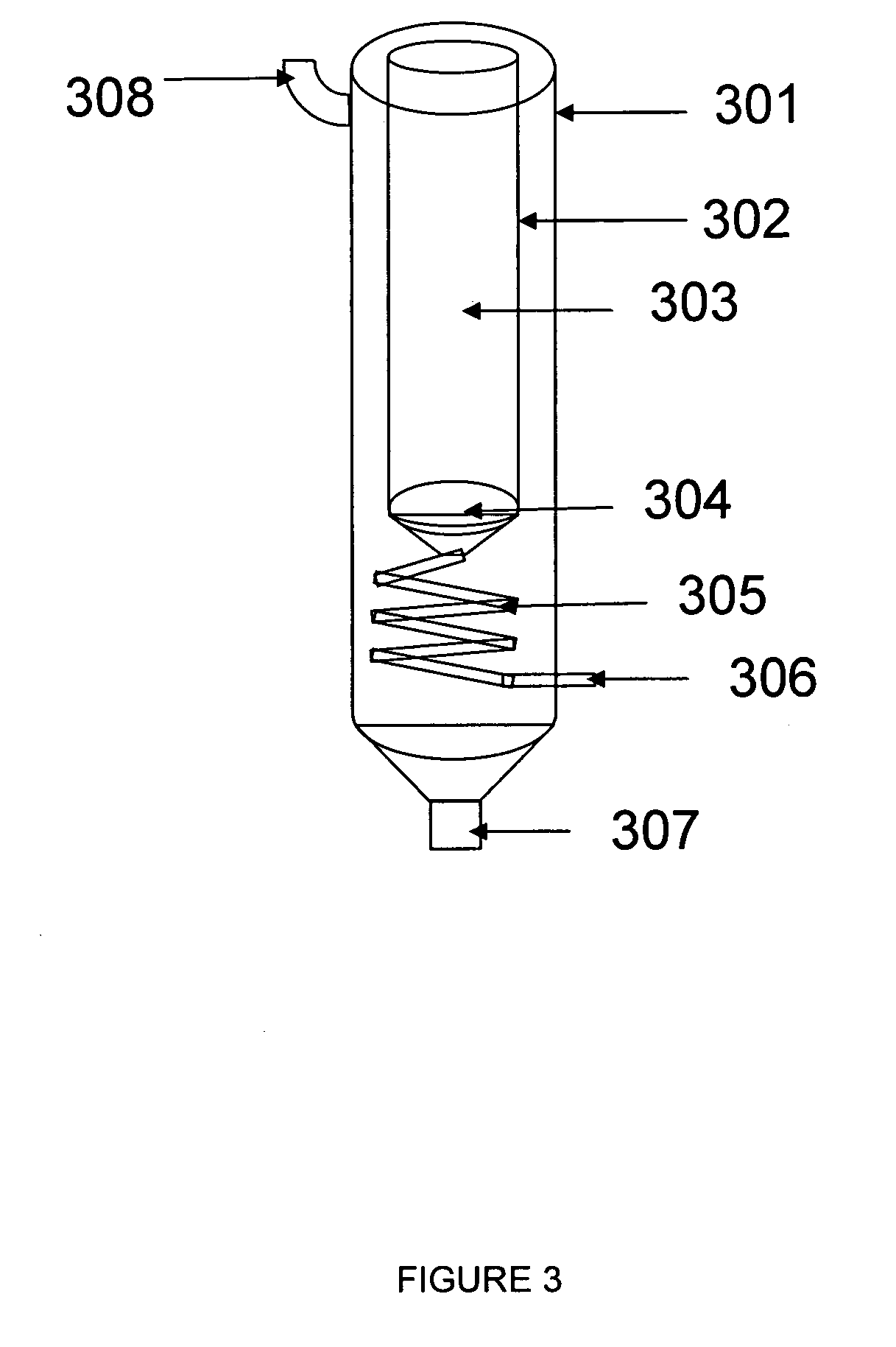Removal of residual acetaldehyde from polyester polymer particles
a technology of acetaldehyde and polyester, which is applied in the direction of chemical apparatus and processes, chemical/physical processes, etc., can solve the problems of process adding a considerable amount of cost (conversion and capital) to the pet manufacturing process, and achieves a greater yellow hue
- Summary
- Abstract
- Description
- Claims
- Application Information
AI Technical Summary
Benefits of technology
Problems solved by technology
Method used
Image
Examples
first embodiment
[0022] In the invention, polyester polymer particles containing residual acetaldehyde are introduced into a vessel at a temperature within a range of 130° C. to 195° C. to form a bed of particles within the vessel, a flow of gas is allowed to pass through at least a portion of the particle bed, and finished particles are withdrawn from the vessel having a reduced amount of residual acetaldehyde.
[0023] In this first embodiment, a stream of polyester polymer particles is fed into the vessel at an elevated temperature. The elevated temperature is at least 130° C., or at least 140° C., or at least 150° C., or at least 160° C., and preferably under 195° C., or 1 90° C. or less. By feeding a stream of hot particles to the stripping vessel, costs associated with heating a flow of gas or providing for a high gas flow rate are avoided if desired. The hot particles provide the heat energy transferred to the gas to provide a gas temperature within the vessel sufficient to effectuate acetaldehy...
experiment set 1
Experiment Set 1
[0098] This set of experiments illustrates the effects of time and temperature on the residual acetaldehyde, molecular weight, color, and crystallinity of the polyester polymer particles.
[0099] Three different polyethylene terephthalate based polymers representing three different geometries were placed in a fluidized bed reactor and exposed to either 150° C., 160° C., or 185° C. temperatures and a low air flow rate for at least 24 hours. More specifically, the experiments were conducted in a column reactor comprised of a modified chromatography column to allow for the introduction of a gas stream over the polymer particles and to regulate the temperature of the polymer particles, a round bottom flask, and a condensor.
[0100] The column reactor is illustrated in FIG. 3. The outside glass wall 301 contains an inside glass wall 302 within which is a chamber 303 for polymer particles. At the bottom of the chamber 303 is a fritted glass support 304, through which is fed ...
PUM
| Property | Measurement | Unit |
|---|---|---|
| temperature | aaaaa | aaaaa |
| degree of crystallinity | aaaaa | aaaaa |
| temperature | aaaaa | aaaaa |
Abstract
Description
Claims
Application Information
 Login to View More
Login to View More - R&D
- Intellectual Property
- Life Sciences
- Materials
- Tech Scout
- Unparalleled Data Quality
- Higher Quality Content
- 60% Fewer Hallucinations
Browse by: Latest US Patents, China's latest patents, Technical Efficacy Thesaurus, Application Domain, Technology Topic, Popular Technical Reports.
© 2025 PatSnap. All rights reserved.Legal|Privacy policy|Modern Slavery Act Transparency Statement|Sitemap|About US| Contact US: help@patsnap.com



